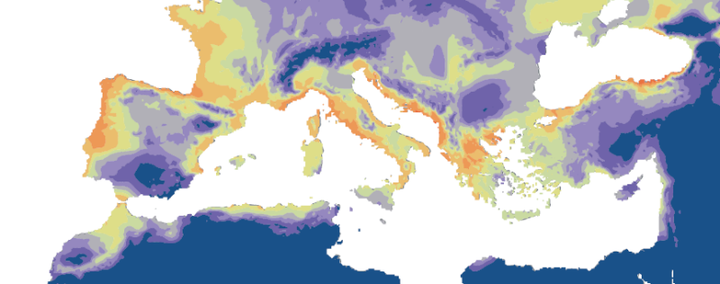Reconstructing the demise of Tethyan plants: climate-driven range dynamics of Laurus since the Pliocene

Abstract
Climate changes are thought to be responsible for the retreat and eventual extinction of subtropical lauroid species that covered much of Europe and North Africa during the Palaeogene and early Neogene; little is known, however, of the spatial and temporal patterns of this demise. Herein we calibrate ecological niche models to assess the climatic requirements of Laurus L. (Lauraceae), an emblematic relic from the Tethyan subtropical flora, subsequently using these models to infer how the range dynamics of Laurus were affected by Plio‐Pleistocene climate changes. We also provide predictions of likely range changes resulting from future climatic scenarios. We used a maximum‐entropy algorithm (Maxent) to model the relationship between climate and Laurus distribution over time. The models were fitted both to the present and to the middle Pliocene, based on fossil records. We employed climatic reconstructions for the mid‐Pliocene (3 Ma), the Last Glacial Maximum (21 ka) and a CO2‐doubling future scenario to project putative species distribution in each period. We validated the model projections with Laurus fossil and present occurrences. Laurus preferentially occupied warm and moist areas with low seasonality, showing a marked stasis of its climatic niche. Models fitted to Pliocene conditions successfully predicted the current species distribution. Large suitable areas existed during the Pliocene, which were strongly reduced during the Pleistocene, but humid refugia within the Mediterranean Basin and Macaronesian islands enabled long‐term persistence. Future climate conditions are likely to re‐open areas suitable for colonization north of the current range.The climatic requirements of Laurus remained virtually unchanged over the last 3 Myr. This marked niche conservatism imposed largely deterministic range dynamics driven by climate conditions. This species’s relatively high drought tolerance might account for the survival of Laurus in continental Europe throughout the Quaternary whilst other Lauraceae became extinct. Climatic scenarios for the end of this century would favour an expansion of the species’s range towards northern latitudes, while severely limiting southern populations due to increased water stress.
Publication metrics
 Smart Citations
Smart CitationsSee how this article has been cited at scite.ai
scite shows how a scientific paper has been cited by providing the context of the citation, a classification describing whether it supports, mentions, or contrasts the cited claim, and a label indicating in which section the citation was made.